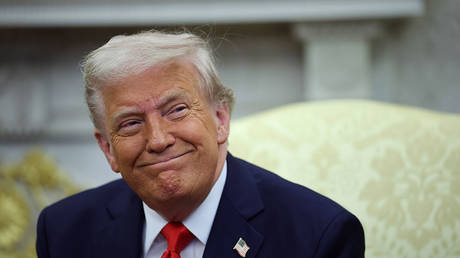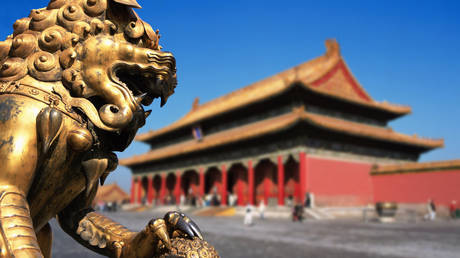Andrew Cuomo Aims to Repair New York, but Critics Claim He Contributed to Its Issues.
They argue that the former governor's policies and his prolonged conflict with ex-Mayor Bill de Blasio played a role in the issues facing New York.

By Monday, nearly all of his opponents had echoed a similar sentiment: Cuomo is largely responsible for many of the city’s current issues. They argued that during his time as governor, he hampered public transit and affordable housing initiatives in an effort to assert control over former Mayor Bill de Blasio.
This criticism from his Democratic rivals aims to challenge Cuomo's connection to the city and to undermine one of his main selling points: his portrayal as a capable manager poised to revitalize the city.
His opponents, anticipating his late entry into the race, are looking to attract voters who value authentic New York experiences—such as commuting via subway—and believe they can offer a more genuine connection to the city's residents.
Critics are also highlighting that during his decade-long governorship, the homeless population in the city grew significantly, and the mass transit system deteriorated, raising doubts about his commitment to truly improve the city versus seeking redemption following his resignation in 2021.
“Being mayor may help Andrew Cuomo, but it won’t do a damn thing for New Yorkers,” remarked Scott Stringer, a former city comptroller and fellow mayoral candidate, in a video released by his campaign.
Cuomo’s long-standing rivalry with de Blasio, his cuts to public assistance, and his approach to mass transit have all provided immediate ammunition for opponents who argue that his quest for power has harmed city residents. They will face off in the Democratic primary on June 24.
A super PAC led by a former de Blasio staffer escalated the criticisms and, in a sharp rebuttal to Cuomo’s affordability platform unveiled on Monday, derided his focus on “showy projects” like a bridge light show over addressing pressing needs such as repairing the city's crumbling subway system.
Further fueling skepticism is Cuomo’s relatively recent shift back to living in the city. After years spent in suburban Westchester County and the governor’s mansion in Albany, he registered to vote in Manhattan last summer.
“Changing your voter registration doesn’t mean you understand what it’s like to be a real New Yorker,” stated Jasmine Gripper, co-director of the Working Families Party, which has a history of opposing the former governor and is set to screen mayoral candidates on Sunday.
These criticisms reflect an understanding that Cuomo, rather than the scandal-plagued Mayor Eric Adams, is seen as the leading contender in the race.
Cuomo spokesperson Rich Azzopardi dismissed the criticisms.
“New York City is in crisis, and we need a serious, proven leader who can get the job done,” he said. “Instead of meeting the moment, these nameless, faceless politicians—some of whom have been in office since the '90s—are flailing around trying to rewrite history because they have no real records of their own other than bear hugging extreme DSA rhetoric and cutting $1 billion from the NYPD budget.”
Cuomo has also spent decades in public life.
Azzopardi highlighted Cuomo’s contributions to major infrastructure projects like the Moynihan Train Hall and Kosciuszko Bridge, contending that he “delivered progress where Washington failed” on matters such as gun control, paid family leave, abortion rights, and tax cuts.
Critics argue that Cuomo’s conflicts with de Blasio, disputes over the control of the Metropolitan Transportation Authority, and decisions regarding affordable housing have made the city more expensive. Much of this criticism stems from Cuomo’s admitted tendencies toward micromanagement and the significant power wielded by a governor over city matters.
Cuomo faced backlash for the decline of mass transit infrastructure, with critics pointing to what they deemed excessive expenditures, such as over $200 million on a light show intended as a tourist attraction, aligning with the governor’s affinity for flashy projects like the LaGuardia Airport overhaul.
“It was Cuomo’s grave mismanagement and carelessness that brought us the ‘summer of hell’ where the subway system was so abominable, there were 70,000 delays a month, causing lost wages from tardiness and missed medical appointments,” said Brad Lander, the city comptroller and mayoral candidate.
Cuomo's campaign countered that his administration “made a historic state commitment to the capital plan” of $8.3 billion in 2015, while also ensuring city and MTA funding commitments for the initiative.
Critics have long questioned Cuomo’s oversight of city issues.
In 2011, facing substantial budget deficits, Cuomo slashed $65 million in annual funding for a rental assistance program known as Advantage, designed to help individuals exiting city homeless shelters. As a result, then-Mayor Mike Bloomberg ended the program, which experts view as a leading factor in the subsequent rise of homelessness in the city.
“You can blame Bloomberg for not doing more having been cheated out of all this money, but the person doing all the cheating was Andrew Cuomo,” argued Joshua Goldfein, an attorney focused on homelessness at the Legal Aid Society.
Following the program's suspension in March 2011, the city’s shelter population surged by 35 percent by the end of 2013, leaving nearly 85,000 people in municipal shelters, according to the Department of Homeless Services’ daily census.
Azzopardi dismissed this claim as “false and lazy,” pointing to replacement programs that had greater funding than the original $59 million, directed toward older New Yorkers and individuals with disabilities and HIV/AIDS.
Cuomo, who served as federal housing secretary under former President Bill Clinton, acknowledged the city’s homelessness crisis during his campaign launch. In a 17-minute speech, he described the unsettling emotions experienced “when you walk down the street and try not to make eye contact with a mentally ill homeless person, or when the anxiety rises up in your chest as you’re walking down into the subway.”
As the city grappled with the issue of street homelessness, Cuomo also presided over a reduction in psychiatric beds, which fell by 11 percent between 2014 and 2022—a year after he left office.
“Now we hear him talking about how New York City is in crisis and we need to involuntarily remove people from the streets—well, there’s no beds to put people in because Cuomo defunded them,” Goldfein noted.
Azzopardi contended that the state only reduced “non-forensic beds,” preserving those for individuals with severe mental illnesses. He also highlighted that Cuomo’s administration aimed to create 20,000 supportive housing units—apartments equipped with social services—spending $2.6 billion to tackle the issue over five years.
Rivals further criticized Cuomo for his attempts to limit the number of federal housing bonds available to the city and for altering their usage, a move that could have hampered the city’s affordable housing initiatives—a policy priority for de Blasio, Cuomo’s adversary.
Though he ultimately did not follow through on this threat, Lander cited it as an instance of “pissing matches, self-aggrandizement, and fear-mongering” that characterized Cuomo’s administration.
“This is someone who’s in it for his ego, not the problem of New Yorkers,” Lander remarked at a press conference concerning Cuomo’s entry into the race.
Thomas Evans for TROIB News
Find more stories on Business, Economy and Finance in TROIB business












